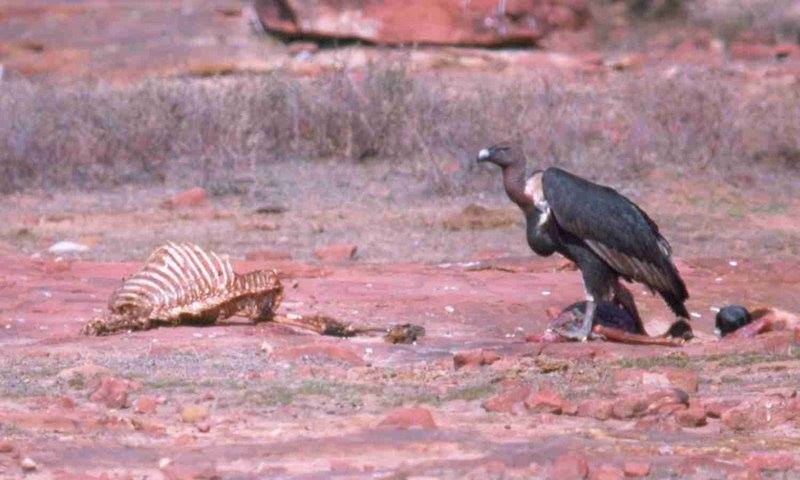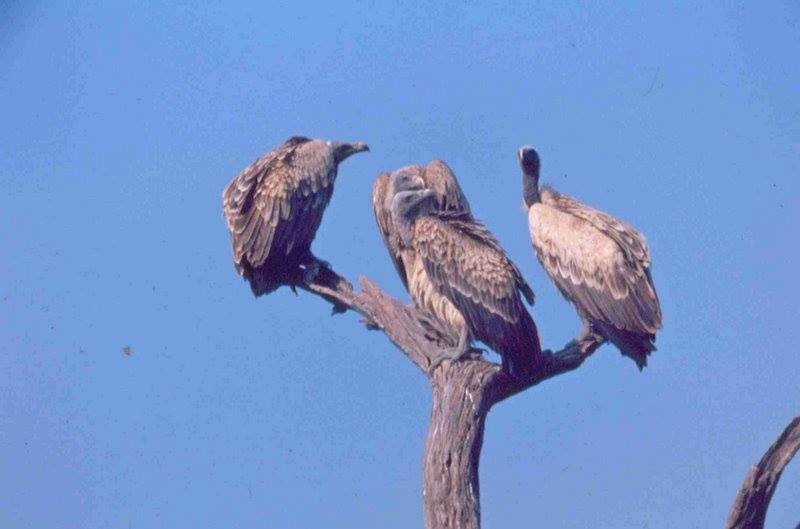-Pradeep Sharma, Veterinary Officer at Department of Animal Husbandry, Govt. of Rajasthan
(Pradeep is a Vet Microbiologist and can be contacted at pradeep@gmx.it)
We are probably aware of the declining number of the three endemic species of vultures in the Indian subcontinent i.e. Long-billed, White-rumped and Slender-billed vultures. These vultures used to be one of the most common raptor (Birds of Prey) species
in the world prior to the nineties, and now very few young people have the privilege to see them in their natural habitat. The single most plausible reason has been exposure of these vultures to the residual veterinary painkiller known as diclofenac as they
consumed carcasses of cattle and other livestock species treated with this drug before their death. This decline has been unprecedented in human history given the scale, speed, number and manner in which a wild species decimated from the planet. This is the
first documented instance of mass-poisoning of a wild species by a veterinary drug.

White- rumped vulture
Dedicated avian conservation organizations have been working in different manners with the help of subject experts, scientists and volunteers in coordination with concerned bodies of the Government of India since start of this millennium. The milestone of the
conservation efforts came when diclofenac was banned in veterinary practices in any form back in 2006 in India-- a success story of how good science can help in conservation of the species practically and realistically.
In the ongoing first step, captive breeding of few selected vultures is successfully being practiced. This was important to safeguard a breeding population in case of total extinction of the vultures from their natural habitat and to breed them to increase
their numbers. Additionally selected areas in India and Nepal were declared as ‘Vulture Safe Zones’ (VSZ)—these are large areas in which consistent and intensive efforts have been made to make sure that livestock species are not treated with diclofenac by
veterinary practitioners, para-vets or the farmers themselves. This is made possible by awareness building, constant monitoring of pharmacies and with the help of local bodies. The captive-bred vultures are now ready to be released in the second phase of the
conservation work. This second phase is very crucial and the success of the first phase of captive breeding mostly depends on its successful execution.

Long- billed vultures
An important question arises if creation of a VSZ is easy as it sounds? Probably no! The most challenging work for people working for conservation of the vultures has been to stop illegal use of diclofenac in veterinary practices. This is due to lackadaisical
enforcement of the law, communication gap between conservation scientists and veterinarians, and most importantly—the quacks! These poorly educated or illiterate quacks, common in rural India are not licensed to practice veterinary medicine legally. These
quacks, in fact, in many cases, can’t read name of the label and their selection of drug is mostly based on how it looks like including its color! Obviously it seems that these quacks are not aware of the harm they are causing, partly true, but in most cases
they use diclofenac because of its cheap availability, efficacy and lack of any painful sensation associated with the only safe veterinary drug so far—Meloxicam. It is highly unlikely that these quacks can ideally respond ever by stopping using diclofenac.
The motivation for this illegal use also stem from the fact that there has been no single trial against the culprits so far in India! Now this vital link of enforcing law in conservation contexts by legal action either doesn’t exist or doesn’t have many takers
presently. A conservation scientist or a volunteer is not always expected to take this long arduous route for obvious reasons but the competent people in the society can take this forward by legal routes. Also the conservation of a species that is going to
extinct is crucial and of utmost importance. The legal action should not be punishing but correcting and must act as a strong deterrence against those who break the law.
Another important aspect that the conservation planners must incorporate is movement of domestic animals across the regions. Animals are being bought and transported by farmers individually or at a mass scale. We are aware of large gathering of farmers
gathering at animal fairs and subsequent transaction of their animals. Buffalo male calves are bought in bulk and transported to slaughter houses. Sheep migration by pastoral communities is an apt example of a systemic migration of domestic animals at a large
scale. Availability of motor vehicles and deeper penetration of the same in rural India makes it quite easier to transport animals to a long distance and in short time.
If we connect the dots, then it is clear that an animal treated with diclofenac away from VSZ could potentially make it to the VSZ in a short time. If the animal dies soon after arrival then the vultures could be exposed to the residual diclofenac contained
therein the carcass. It is practically not possible to stop such movements and check every individual animal this way.
Furthermore few more veterinary painkillers are also toxic to the vultures including ketoprofen and aceclofenac. In fact, aceclofenac is a structural and pharmacological derivative of diclofenac itself. Though researchers have proved the potential toxicity
of these drugs but still it is not illegal to use these drugs in veterinary practices. It also means that these drugs can still be used in a VSZ, which is alarming.
Another factor adding to complexity of VSZ is enormous foraging range of the vultures, which could fly in excess of a hundred kilometers at a stretch. Even a very big VSZ could not ensure movement of the vultures exclusively with in designated boundaries of
the VSZ.
So we have a potentially worrying situation of illegal use of diclofenac in veterinary practices, specially made rampant by quacks, and a quick large-distance movement of animals that is damaging to very fundamental objective of creating a VSZ, which is to
check exposure of diclofenac to the vultures. Any prospective or existing conservation strategy must incorporate critical evaluation of these situations before releasing the captive-bred vultures to these zones. An effective enforcement of the diclofenac ban
is probably the most cheap, practical and long-term strategy for in-situ conservation of the critically endangered vultures, which unfortunately, is being paid the least attention.